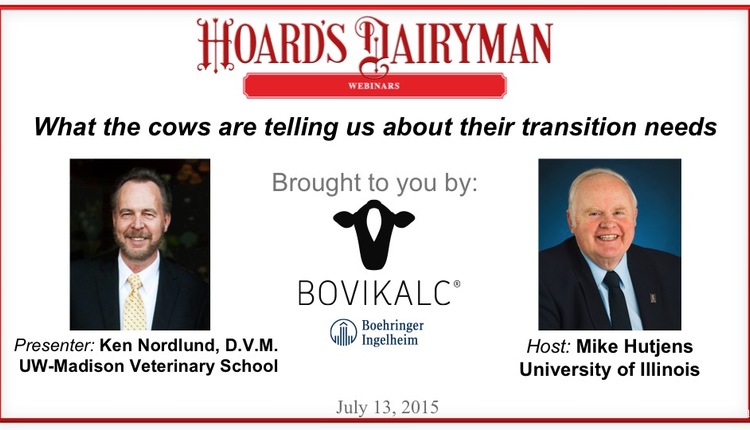
 The three weeks before and after calving are the most vulnerable for a cow. During this transition period, many changes take place in her body and environment.
The three weeks before and after calving are the most vulnerable for a cow. During this transition period, many changes take place in her body and environment. Seventy-five percent of diseases occur during this critical time. Avoiding those problems reduces stress and gives cows the opportunity to produce up to their potential. Ken Nordlund, veterinarian and professor emeritus from the Veterinary School at the University of Wisconsin-Madison presented the monthly Hoard’s Dairyman webinar, “What the cows are telling us about their transition needs.”
With years of private practice, research and teaching experience, Nordlund brought real-world insight. With variances in farm recordkeeping, Nordlund sought ways to standardize cow heath data so records could be analyzed. The Transition Cow Index (TCI) was developed to evaluate the effectiveness of cow care during this critical period. It represents the expected difference between actual and expected milk production and should be used for herd evaluation rather than on a per cow basis. In Midwest studies, Nordlund evaluated environmental factors and his findings were:
- Sand as bedding was better than hard surfaces
- Wider freestalls (52 inches for Holsteins) were better than narrower ones
- At-capacity housing and overstocking was found to be detrimental
- Excessive pen moves and introducing new members to transition cow pens more often had a negative impact
- It was best to move cows into maternity pens two days or less before calving.
However, Nordlund’s research shows that an overcrowded prefresh group results in significantly more fresh cow problems. The added costs of building prefresh facilities that provide more resting areas and bunk space than you think you’ll need (not at capacity) will easily be offset by improved cow health and more milk.
Learn more about transition cow management, watch the July webinar. The webinar was brought to you by Bovikalc. It’s archived and available for viewing. Past webinars can be found at www.hoards.com/webinars.
If you’d like to read more about our Webinars or Dairy Management follow these links.


Patti Hurtgen
The author is the online media manager and is responsible for the website, webinars and social media. A graduate of Modesto Junior College and Fresno State, she was raised on a California dairy and frequently blogs on youth programs and consumer issues.








